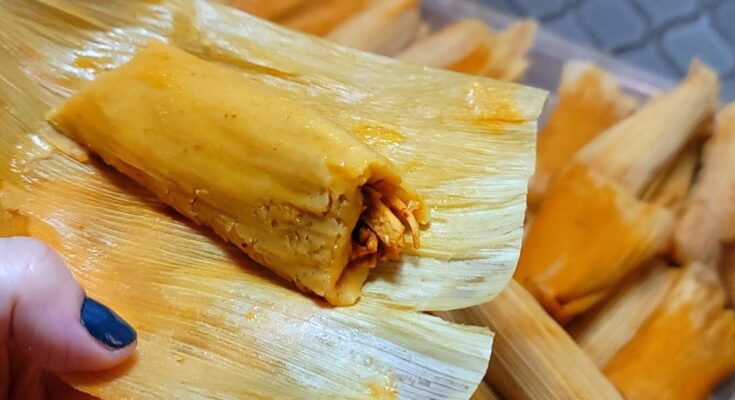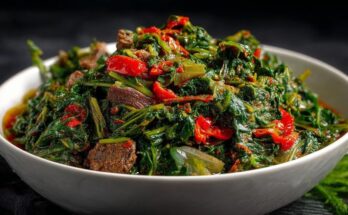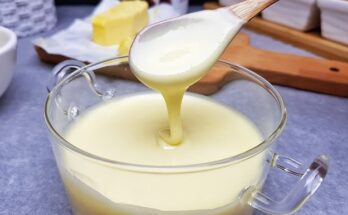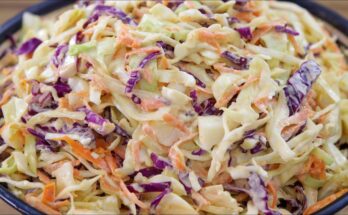Chicken Tamales Recipe: Tamales are one of the most beloved dishes in Latin American cuisine, known for their unique flavor, comforting texture, and deep cultural roots. A tamale is essentially a bundle of joy—corn dough (known as masa) filled with delicious meats, vegetables, or cheese, all wrapped in a corn husk and steamed to perfection. Among all the variations, chicken tamales stand out as a favorite because they are flavorful, juicy, and relatively simple to prepare compared to beef or pork options.
So, why do people love chicken tamales so much? The answer lies in their balance of flavor and texture. The masa is soft, fluffy, and slightly sweet, which perfectly complements the savory chicken filling. When paired with a rich sauce—whether green tomatillo salsa or smoky red chili—the result is pure comfort food. Chicken tamales are also versatile: you can enjoy them as a hearty breakfast, a festive dinner, or even pack them for family gatherings and holidays.
Tamales have been enjoyed for thousands of years, dating back to ancient Mesoamerican civilizations like the Aztecs and Mayans. They were the ideal food for warriors and travelers because they were portable, filling, and packed with nutrients. Today, they are still prepared in traditional ways but have also adapted to modern kitchens around the world. If you’ve ever wanted to make tamales from scratch, this guide will walk you through every detail step by step so you can enjoy authentic chicken tamales in your own home.
Ingredients You’ll Need
To make authentic chicken tamales, you’ll need a combination of staple ingredients and flavorful spices. The beauty of this recipe is that once you master the basics, you can adjust the flavors to your liking.
Essential Ingredients for the Masa
The masa is the heart of every tamale. It creates the fluffy, slightly sweet base that balances out the savory chicken filling. For the masa, you will need:
- 4 cups masa harina (corn flour for tamales, not regular cornmeal)
- 1 ½ teaspoons baking powder
- 2 teaspoons salt
- 1 cup vegetable shortening or lard (lard gives a more traditional flavor)
- 3–4 cups chicken broth (use the broth from cooking the chicken for extra flavor)
These ingredients work together to create a soft, spreadable dough that holds the filling without being dry or crumbly.
Ingredients for the Chicken Filling
The filling is what brings the tamale to life. For the chicken filling, you will need:
- 2 pounds boneless, skinless chicken breasts or thighs
- 1 large onion, quartered
- 4 garlic cloves
- 2 teaspoons cumin
- 1 teaspoon smoked paprika
- 1 teaspoon chili powder
- Salt and pepper to taste
This chicken will later be shredded and mixed with a sauce for maximum flavor.
Additional Ingredients for Flavor
For a rich and authentic taste, you’ll need to make a sauce for your chicken. Choose either red or green, depending on your preference. Common ingredients include:
- For red sauce: dried ancho chilies, dried guajillo chilies, tomato, garlic, onion, and Mexican oregano
- For green sauce: tomatillos, jalapeños, cilantro, garlic, and lime juice
Don’t forget dried corn husks, which are essential for wrapping and steaming tamales.
Tools and Equipment Needed
Making tamales is a bit of a process, so having the right tools will make things easier:
- A large pot or tamale steamer
- Mixing bowls
- Blender or food processor (for the sauce)
- Wooden spoon or stand mixer (for the masa)
- Tongs (to handle hot tamales after steaming)
Having these ready before you start will make the cooking process much smoother.
Preparing the Ingredients
Before you begin assembling tamales, you need to prepare each component individually. This ensures that when it’s time to put everything together, you’ll have a smooth workflow and perfectly balanced flavors.
Cooking and Shredding the Chicken
Start by placing your chicken in a large pot with water, onion, garlic, salt, and pepper. Bring it to a boil, then reduce the heat and simmer for 30–40 minutes until the chicken is tender. Once cooked, remove the chicken from the broth (save the broth for the masa!) and shred it using two forks. Shredded chicken absorbs sauce beautifully and ensures every bite of the tamale is flavorful.
Making the Flavorful Chicken Sauce
The sauce is what transforms simple shredded chicken into the star of the dish. For a red sauce, you’ll soak dried chilies until soft, then blend them with garlic, onion, tomato, and spices to create a smoky, earthy base. For a green sauce, roast tomatillos, garlic, and jalapeños before blending with cilantro and lime for a tangy, refreshing flavor. Once your sauce is ready, toss the shredded chicken in it so every strand is coated.
Preparing the Corn Husks
Corn husks come dried, so you’ll need to soak them in warm water for at least 30 minutes until they are pliable. Rinse them thoroughly to remove any grit. Choose the larger husks for wrapping and save the smaller or torn ones to line the steamer.
Mixing the Perfect Masa Dough
In a large mixing bowl, beat the lard or shortening until fluffy (this helps make the masa light). Gradually mix in masa harina, salt, and baking powder. Slowly add the reserved chicken broth until the dough is soft, spreadable, and slightly sticky but not too wet. A good test is to drop a small ball of dough in water—if it floats, your masa is ready!
Step-by-Step Guide to Making Chicken Tamales
Now that your ingredients are prepped, it’s time for the fun part: assembling and cooking the tamales.
Step 1 – Soaking the Corn Husks
Make sure your husks are soft and pliable from soaking. Pat them dry before use.
Step 2 – Spreading the Masa Dough
Lay a corn husk flat with the smooth side facing up. Using a spoon or spatula, spread a thin layer of masa dough onto the wider part of the husk, leaving about 1–2 inches free at the top and sides. The masa layer should be even but not too thick—around ¼ inch works best.
Step 3 – Adding the Chicken Filling
Spoon about 2 tablespoons of the chicken mixture onto the center of the masa. Be careful not to overfill, as this will make folding difficult.
Step 4 – Folding and Wrapping Tamales
Fold the sides of the corn husk toward the center so the masa encloses the chicken. Then fold the bottom of the husk up, leaving the top open. This allows steam to circulate while cooking.
Step 5 – Steaming the Tamales
Line the bottom of your steamer with leftover husks to prevent sticking. Arrange the tamales upright, open side up. Cover with more husks and a damp cloth before placing the lid on. Steam for 1 to 1 ½ hours, checking occasionally to make sure there’s enough water in the pot. Tamales are done when the masa easily pulls away from the husk.
Serving and Enjoying Chicken Tamales
After all the effort you’ve put into preparing, assembling, and steaming your chicken tamales, the best part has finally arrived—serving and enjoying them. Tamales are more than just food; they’re an experience. They bring family and friends together, and they taste even better when shared.
Traditional Ways to Serve Tamales
In Mexico and across Latin America, tamales are often enjoyed straight from the steamer, still wrapped in their corn husks. You peel back the husk and are greeted with the warm, fragrant masa and savory chicken filling. Traditionally, tamales are served with a generous spoonful of salsa on top. You can use red chili sauce for a smoky kick or green tomatillo salsa for a tangy, refreshing flavor. Some people also enjoy tamales with crema (Mexican sour cream) or a sprinkle of crumbly queso fresco.
Tamales are commonly eaten during celebrations like Christmas, Día de los Muertos, and family gatherings. In fact, in many households, making tamales is a group activity where everyone takes part in spreading masa, filling, and wrapping. Sharing them with loved ones adds a special touch to the meal.
Side Dishes and Drinks that Pair Well
If you want to serve a complete meal, tamales pair beautifully with classic Mexican side dishes. Some great options include:
- Mexican Rice – A flavorful tomato-based rice that complements the tamales’ richness.
- Refried Beans – Creamy beans that balance out the masa’s texture.
- Guacamole or Fresh Avocado Slices – For a fresh and creamy bite.
- Elote (Mexican Street Corn) – Grilled corn topped with mayonnaise, chili powder, and cheese.
For drinks, you can’t go wrong with:
- Atole or Champurrado – Traditional warm drinks made from masa, milk, and chocolate.
- Agua Fresca – Refreshing fruit drinks like horchata (rice milk with cinnamon), tamarind, or hibiscus tea.
- Mexican Hot Chocolate – Rich, spiced chocolate that pairs perfectly with savory tamales.
Storage and Reheating Tips
One of the great things about tamales is that they store well, making them perfect for meal prep or future gatherings.
- In the refrigerator: Store tamales in an airtight container for up to 5 days.
- In the freezer: Wrap each tamale in plastic wrap or foil, then place in a freezer-safe bag. They can last up to 6 months.
When reheating, avoid the microwave if possible, as it can dry out the masa. Instead, steam them for about 20 minutes if refrigerated or 45 minutes if frozen. This keeps the tamales moist and just as delicious as when they were first cooked.
Variations of Chicken Tamales
One of the best things about tamales is how versatile they are. While the classic shredded chicken with red or green sauce is always a crowd-pleaser, you can experiment with different flavors to suit your taste.
Spicy Chicken Tamales
If you love heat, try adding more chili peppers to your chicken sauce. Using chipotle peppers in adobo gives tamales a smoky, spicy kick, while habanero or serrano chilies bring bold heat. Balance the spice with a squeeze of lime juice or a touch of sweetness from caramelized onions.
Green Sauce Chicken Tamales
For a lighter and tangier version, prepare your chicken with salsa verde. This sauce, made with tomatillos, cilantro, jalapeños, and lime, creates a refreshing contrast to the rich masa. Green chicken tamales are especially popular in central and southern Mexico.
Cheese and Chicken Tamales
Want something extra indulgent? Add cheese! Mixing shredded cheese like queso fresco, cheddar, or even Oaxaca cheese with your chicken filling gives the tamales a creamy, melty center. This variation is always a hit with kids and cheese lovers alike.
Tips and Tricks for Perfect Tamales
Even if you follow every step of the recipe, there are a few little secrets that can help take your tamales to the next level.
Common Mistakes to Avoid
- Overfilling the husks: Too much filling makes tamales hard to fold and can cause them to burst open while steaming.
- Dry masa: If the masa is too dry, your tamales will come out crumbly instead of soft and fluffy. Always test your dough before using it.
- Not steaming long enough: Undercooked tamales will stick to the husk and taste doughy. Be patient—steaming takes time.
How to Keep Tamales Moist and Flavorful
- Always check the water level in your steamer. If it runs dry, the tamales won’t cook properly.
- Cover the tamales with extra husks or a damp kitchen towel to trap steam inside the pot.
- Use flavorful chicken broth in your masa instead of plain water for an extra boost of taste.
Cooking for a Large Crowd
Making tamales is a labor of love, but it’s even more fun when done in batches with family or friends. If you’re cooking for a big event:
- Assign roles—one person spreads masa, another adds filling, someone else folds.
- Make the tamales ahead of time and freeze them. You can steam them fresh on the day of the event.
- Serve with a “tamale toppings bar” including salsa, crema, cheese, and hot sauce so guests can customize.
Health Benefits of Chicken Tamales
Tamales are often seen as indulgent, but they can actually be part of a healthy and balanced diet—especially when made at home, where you control the ingredients.
Nutritional Value
Chicken tamales provide a good mix of protein (from the chicken), carbohydrates (from the masa), and fiber (from corn husks and optional vegetables). They are filling, satisfying, and full of energy.
Healthy Ingredient Substitutions
- Swap lard for vegetable oil or olive oil to reduce saturated fat.
- Use whole-grain masa harina for added fiber.
- Add vegetables like spinach, mushrooms, or zucchini to the chicken filling for extra nutrients.
Gluten-Free and Low-Fat Options
Since masa harina is naturally gluten-free, tamales are a great option for those avoiding gluten. If you’re watching calories, make smaller tamales or reduce the fat in the masa. You can also steam them without heavy sauces and serve with fresh salsa instead.
FAQs about Chicken Tamales Recipe
1. Can I make tamales ahead of time?
Yes! You can assemble the tamales and refrigerate them for up to 2 days before steaming, or freeze them for later use.
2. How long do tamales last in the fridge?
Tamales can be stored in an airtight container in the refrigerator for up to 5 days.
3. Can I freeze tamales?
Absolutely! Wrap each tamale individually in plastic wrap or foil and freeze for up to 6 months. Steam them directly from frozen when ready to eat.
4. What is the best sauce for chicken tamales?
Both red chili sauce and green tomatillo salsa are traditional options. Red sauce is smoky and bold, while green sauce is tangy and refreshing.
5. Do I need a special steamer for tamales?
A traditional tamale steamer is best, but any large pot with a steaming rack will work. Just make sure the tamales are upright and not sitting in water.
Conclusion
Making chicken tamales at home is more than just following a recipe—it’s embracing a tradition that has been passed down through generations. From preparing the masa and soaking the husks to shredding the chicken and steaming the tamales, every step is part of a beautiful cooking ritual. The end result? A dish that is comforting, flavorful, and deeply satisfying.
Whether you enjoy them with spicy red sauce, tangy green salsa, or stuffed with cheese, chicken tamales are always a hit. They’re perfect for family gatherings, festive occasions, or even a simple dinner when you want something special. With this step-by-step guide, you now have everything you need to master the art of making tamales at home.



